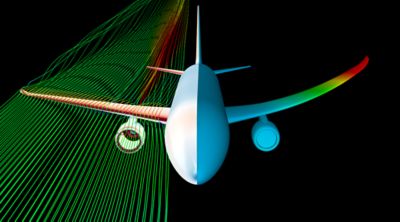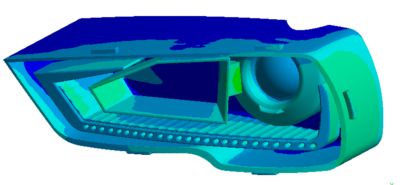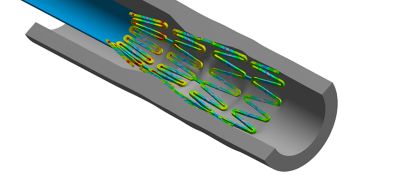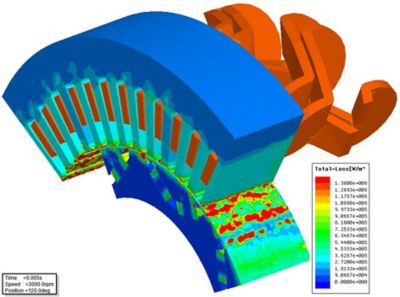-
-
Software gratuito per studenti
Ansys potenzia la nuova generazione di ingegneri
Gli studenti hanno accesso gratuito a software di simulazione di livello mondiale.
-
Connettiti subito con Ansys!
Progetta il tuo futuro
Connettiti a Ansys per scoprire come la simulazione può potenziare la tua prossima innovazione.
Paesi e regioni
Customer Center
Supporto
Partner Community
Contatta l'ufficio vendite
Per Stati Uniti e Canada
Accedi
Prove Gratuite
Prodotti & Servizi
Scopri
Chi Siamo
Back
Prodotti & Servizi
Back
Scopri
Ansys potenzia la nuova generazione di ingegneri
Gli studenti hanno accesso gratuito a software di simulazione di livello mondiale.
Back
Chi Siamo
Progetta il tuo futuro
Connettiti a Ansys per scoprire come la simulazione può potenziare la tua prossima innovazione.
Customer Center
Supporto
Partner Community
Contatta l'ufficio vendite
Per Stati Uniti e Canada
Accedi
Prove Gratuite
ARGOMENTO IN DETTAGLIO
Che cos'è la multifisica?
Nella vita reale, i fenomeni fisici non si verificano uno alla volta. Le forze fluide, strutturali, termiche ed elettromagnetiche interagiscono continuamente e, nel punto di incontro di questi domini, si verificano fenomeni come trasferimento di calore, deformazione e trasporto di massa.
La multifisica è l'analisi delle complesse interazioni tra forze fisiche attraverso la simulazione al computer. Combinando singoli solver fisici in un unico framework computazionale, i flussi di lavoro multifisici aiutano gli ingegneri a modellare con precisione il comportamento di un intero sistema, basandosi sui fenomeni fisici reali, tutto in una volta sola.
I modelli multifisici colmano le lacune dell'analisi monofisica.

Esempi di applicazioni che possono essere risolte tramite flussi di lavoro multifisici.
Esempi di applicazioni multifisiche
Quando più entità fisiche (come fluidi e strutture, strutture e campi elettromagnetici) interagiscono fra loro, si dice che sono "accoppiati". Queste interazioni si verificano continuamente tutto intorno a noi, ad esempio quando tocchiamo lo schermo di un telefono o quando guidiamo un'auto su una strada accidentata. Ecco alcuni esempi tipici di accoppiamenti multifisici:
Interazione fluido-struttura (FSI, Fluid-Structure Interaction):
Sicurezza aerea: modellazione dell'effetto del flusso d'aria (fluidodinamica) sulla deformazione e sull'assorbimento degli urti (meccanica strutturale) del carrello di atterraggio.
Accoppiamento termo-ottico:
Heads-up display (HUD): modellazione del modo in cui le temperature esterne (effetti termici) influiscono sulla nitidezza delle immagini proiettate nei veicoli (ottica).
Accoppiamento strutturale-acustico:
Rumore della strada: modellazione del feedback acustico (acustica) nei veicoli dovuto all'attrito fra pneumatici e superficie stradale (meccanica strutturale).
Accoppiamento elettromagnetico-termico:
Generazione di energia: modellazione del modo in cui i campi energetici di un motore (elettromagnetismo) producono calore (dinamica termica) per ottimizzare scambiatori di calore e ventole.
I problemi tecnici che richiedono l'analisi multifisica possono essere risolti con diversi gradi di accoppiamento.
Se il problema fisico riguarda un accoppiamento debole, ad esempio quando le forze fluide creano sollecitazioni strutturali ma non deformano la struttura in modo significativo, il problema può essere risolto con un'analisi accoppiata unidirezionale.
In caso di accoppiamento forte , ad esempio quando la struttura si deforma al punto da influenzare il flusso, abbiamo bisogno di una soluzione accoppiata bidirezionale.
Applicazioni multifisiche
In tutti i settori, gli ingegneri ricorrono alle soluzioni multifisiche per identificare i problemi nelle prime fasi del processo di progettazione, prendere decisioni informate sulle ottimizzazioni e garantire la sicurezza e le prestazioni dei prodotti finali. Le aziende devono avere la possibilità di prevedere con precisione il comportamento dei prodotti complessi negli ambienti reali in cui interagiscono diverse entità fisiche accoppiate.
Settore aerospaziale: analisi dell'interazione tra fluido e struttura, per determinare il peso, la forma e la struttura ottimali delle ali degli aeromobili.

Settore automobilistico: simulazione dell'espansione termica e delle deformazioni dei fari, per prevedere le prestazioni ottiche.

Sanità: modellazione delle interazioni fra il tessuto umano e le strutture dei dispositivi medicali, come impianti e stent.

Industria: analisi magnetiche, strutturali e acustiche per identificare le cause delle vibrazioni e ridurre l'usura dei motori.

Simulazione multifisica
Le simulazioni multifisiche consentono di modellare interazioni simultanee complesse tra vari domini fisici, che non possono essere facilmente studiate in modo sperimentale per problemi di costi, tempi o sicurezza. Queste simulazioni consentono di comprendere più a fondo le prestazioni dei prodotti, trasmettendo e convertendo i dati fra le varie discipline tecniche.
I recenti progressi nella capacità dei computer, i solver più veloci e affidabili, a cui si aggiungono metodi più efficaci per la creazione dei flussi di lavoro, hanno accelerato il passaggio dalla simulazione monofisica alla simulazione multifisica completa. Questa evoluzione consente agli ingegneri di prevedere meglio il funzionamento dei loro progetti negli ambienti reali.
Vantaggi della simulazione multifisica
Modellazione realistica: acquisizione accurata di scenari reali, in cui più domini fisici interagiscono contemporaneamente.
Analisi a livello di sistema: fornisce informazioni dettagliate sul modo in cui gli accoppiamenti fisici influenzano le prestazioni complessive di un sistema.
Efficienza in termini di tempo: è possibile analizzare interi sistemi contemporaneamente, anziché per domini isolati.
Problematiche della simulazione multifisica
Congruenza dei dati: i diversi domini fisici hanno scale temporali, scale spaziali e risoluzioni della mesh diverse.
Esperienza utente: per interpretare le simulazioni multifisiche è necessario possedere competenze specialistiche in varie discipline.
Costo di elaborazione: a causa dell'elaborazione intensiva associata alle simulazioni multifisiche, questi calcoli sono molto dispendiosi in termini di tempo e risorse.
Strumenti per l'analisi multifisica
In genere, i singoli solver si concentrano su aree specifiche della fisica, come la meccanica strutturale, la dinamica dei fluidi o l'elettromagnetismo, ma ne esistono alcuni che includono modelli multifisici autocontenuti. Ad esempio, oltre a risolvere i problemi di dinamica dei fluidi, il software di simulazione Ansys Fluent® è in grado di modellare anche l'acustica, il movimento, il trasferimento di calore nei solidi e lo stress termico. I singoli solver con funzionalità multifisiche sono utili per analizzare gli accoppiamenti nei modelli che condividono geometria, mesh e impostazioni.
Tuttavia, all'aumentare della complessità dei prodotti, la simulazione monofisica potrebbe non essere più sufficiente,
e diventa essenziale ricorrere alla co-simulazione. Connettendo più solver specializzati, è possibile acquisire in modo più preciso le interazioni complesse tra i diversi fenomeni fisici. Strumenti come il software di connessione del solver fisico Ansys System Coupling™ integrano tutti i solver principali all'interno di una singola interfaccia. In questo modo, gli ingegneri possono creare agevolmente modelli multidominio ad alta fedeltà all'interno di uno stesso ambiente di progettazione unificato.
Soluzione multifisica a singolo solver: esegue l'analisi interndominio all'interno di un solver, per una serie specifica di equazioni fisiche accoppiate. Fornisce una configurazione semplice in cui le interazioni sono strettamente accoppiate.
Soluzione multifisica per l'accoppiamento del sistema: coordina e scambia dati tra solver specializzati in un singolo framework computazionale. Offre una flessibilità superiore per la modellazione delle situazioni complesse, che richiedono il coordinamento di solver indipendenti per acquisire le interazioni tra i modelli fisici.
Il futuro della multifisica
Esistono diverse tendenze di sviluppo dei prodotti che alimentano la necessità di migliorare l'applicazione della modellazione multifisica, come la sostenibilità e l'aumento della densità di potenza nei chip e nei circuiti integrati tridimensionali (3D-IC). Mentre le aziende studiano innovazioni che consentono di aumentare la potenza e ridurre gli sprechi, l'analisi multifisica fornisce le informazioni olistiche necessarie per comprendere a fondo tutte le interazioni tra i fenomeni fisici all'interno dei progetti.
Risorse correlate
Cominciamo
Se devi affrontare sfide di progettazione, il nostro team è a tua disposizione per assisterti. Con una vasta esperienza e un impegno per l'innovazione, ti invitiamo a contattarci. Collaboriamo per trasformare i tuoi ostacoli ingegneristici in opportunità di crescita e successo. Contattaci oggi stesso per iniziare la conversazione.